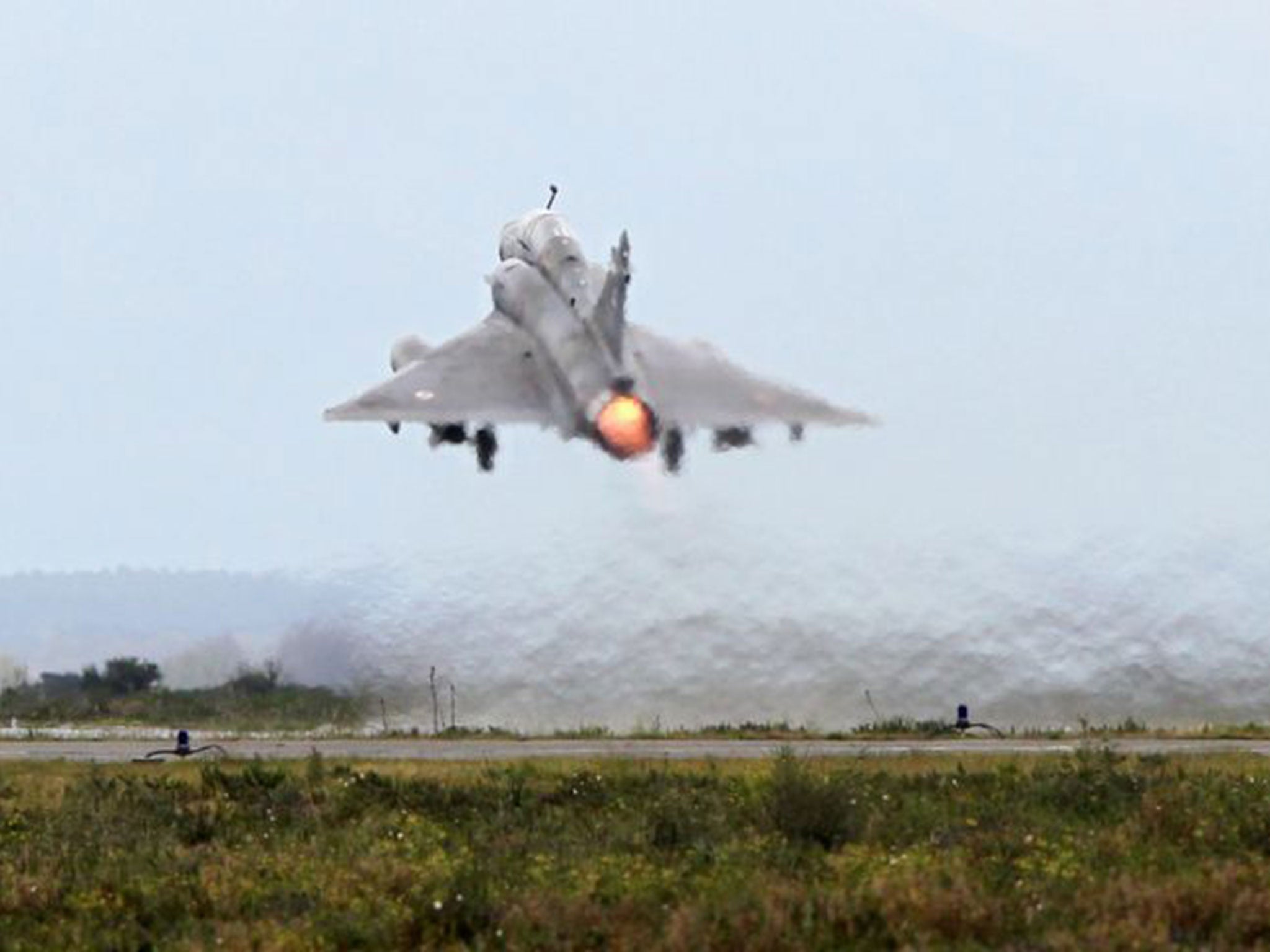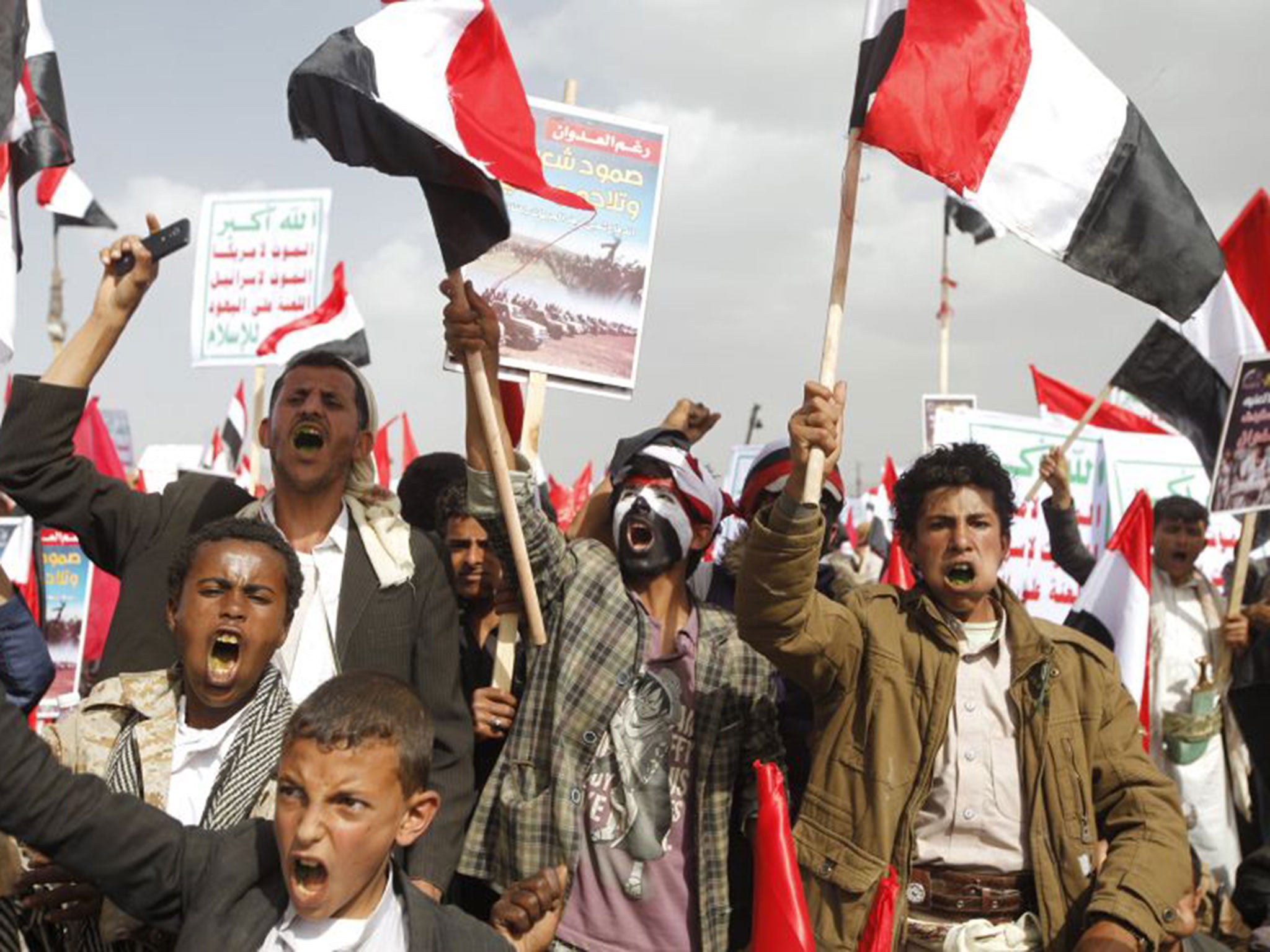Yemen conflict: Al-Qaeda ‘used surface-to-air missile’ to bring down Emirati fighter jet
Exclusive: Terror group’s acquisition of sophisticated weaponry raises the stakes in the country’s bitter civil war, and causes consternation in Washington

Your support helps us to tell the story
This election is still a dead heat, according to most polls. In a fight with such wafer-thin margins, we need reporters on the ground talking to the people Trump and Harris are courting. Your support allows us to keep sending journalists to the story.
The Independent is trusted by 27 million Americans from across the entire political spectrum every month. Unlike many other quality news outlets, we choose not to lock you out of our reporting and analysis with paywalls. But quality journalism must still be paid for.
Help us keep bring these critical stories to light. Your support makes all the difference.
Al-Qaeda has acquired sophisticated surface-to-air missiles, The Independent has learned, which were used to shoot down an Emirati fighter jet in a dangerous escalation of the civil war raging in Yemen.
A French-made Mirage jet, flying in the air force of the United Arab Emirates (UAE), crashed into a mountain side just outside the southern port city of Aden on 14 March. Authorities claimed that the crash was “the result of a technical malfunction”, but sources dispute this, claiming that the jet was shot down with Russian munitions. The incident raises the spectre of other jihadist branches accessing sophisticated surface-to-air missiles in Syria, Iraq and further afield.
The UAE is part of a Saudi-led coalition that has carried out a year-long war against Shia Houthi rebels, primarily from the air. Also involved in the war is al-Qaeda’s regional affiliate, al-Qaeda in the Arabian Peninsula (AQAP). With the bombing war dragging on, AQAP has worked assiduously and quietly to consolidate its hold in south Yemen.
Two pilots flying the jet were killed in the crash and locals reported seeing Apache helicopters and the jet engaged in an attack on AQAP forces dug into a district to the west of Aden. Security sources have estimated that some 300 jihadist fighters were under attack at the time the jet came down.
A source in Yemen told The Independent that the surface-to-air missile was a Russian-manufactured SA-7 or “Strela”. The SA-7 is a shoulder held heat-seeking missile. It has a “kill zone” range of between 15 and 1,500 metres in altitude, suggesting that the Mirage was flying low in a strafing run on the AQAP positions when it was hit.
The SA-7 has been around for several decades. The most likely source is Bulgaria which, after the breakup of the Soviet Union, sold Russian military hardware, including the SA-7, to countries alll over the Middle East.

The incident was the fourth time a coalition jet had crashed in the Yemen campaign, but the first in which a surface-to-air missile was used.
In late December an American-made F-16, part of Bahrain’s air force, came down in Saudi Arabia. The pilot ejected and survived in what appeared to be a crash related to a technical problem.
In May of last year, a Moroccan pilot died when his F-16 crashed in the north Yemen governorate of Saada. The Houthis claimed at the time that the jet was flying low and was hit by anti-aircraft guns positioned in the mountains. Coalition authorities said technical problems caused the crash.
The third plane, a Saudi F-15, came down in international waters in the Gulf of Aden at the start of the war, with officials citing mechanical issues.
A second source, who has close links with the Saudi intelligence service, said that the missile which brought down the Emirati jet this month was acquired by AQAP in raids on military bases that have occurred over the past year.
“Al Qaeda has confiscated huge amounts of weapons from bases in Yemen,” he said. He cited two such bases, one at al-Aryan along the southern coast east of Aden and another at Ataq, the capital of the southern governorate of Shabwah.
Using alliances with local tribes, al-Qaeda now controls the oil rich governorate of Hadhramaut together with the coastal city of Mukalla. Shabwah lies to the west of Hadhramaut and it too is largely controlled by AQAP and its tribal affiliates. “Al-Qaeda are smarter than Islamic State [Isis],” the source said. “They speak with the tribal elders, they co-opt people, get them on their side. Islamic State uses fear and coercion. It’s flashy and seeks a lot of attention but al-Qaeda is laying low and playing the long game.”
The source also said that what he called “co-operative army officers” were making it easy for the jihadists to get weapons, many of them supplied by the Americans to the Yemeni army during the presidency of Ali Abdullah Saleh. Mr Saleh who ruled Yemen with an iron hand for several decades was forced out in 2012 in the wake of popular protests.
The source claimed that soldiers loyal to Mr Saleh, who is allied to the Houthis, as well as soldiers supporting the current Saudi backed president Abd Rabbuh Mansur Hadi are selling arms to AQAP. “They are getting the weapons from both sides,” the source said.
The growing strength of AQAP – which has made significant territorial gains while the Saudi coalition attempts to quell the Houthi uprising, thus far with little success – is causing consternation in Washington. The Americans, who backed the bombing campaign and have provided logistical support, are increasingly worried that in the last year al-Qaeda has secured much of south Yemen as a significant operational base, one with substantial oil revenue potential.
Now, as signs grow that AQAP is becoming increasingly entrenched and much better armed, American support for the Yemen war is waning quickly. News that a ceasefire has been called for 10 April with peace talks commencing a week later in Kuwait was greeted with a sigh of relief in Washington.
But the quiet and steady rise of AQAP in south Yemen has left America and the region facing a significant new threat as it struggles to subdue Isis in Syria and Iraq.
Subscribe to Independent Premium to bookmark this article
Want to bookmark your favourite articles and stories to read or reference later? Start your Independent Premium subscription today.
Join our commenting forum
Join thought-provoking conversations, follow other Independent readers and see their replies
Comments